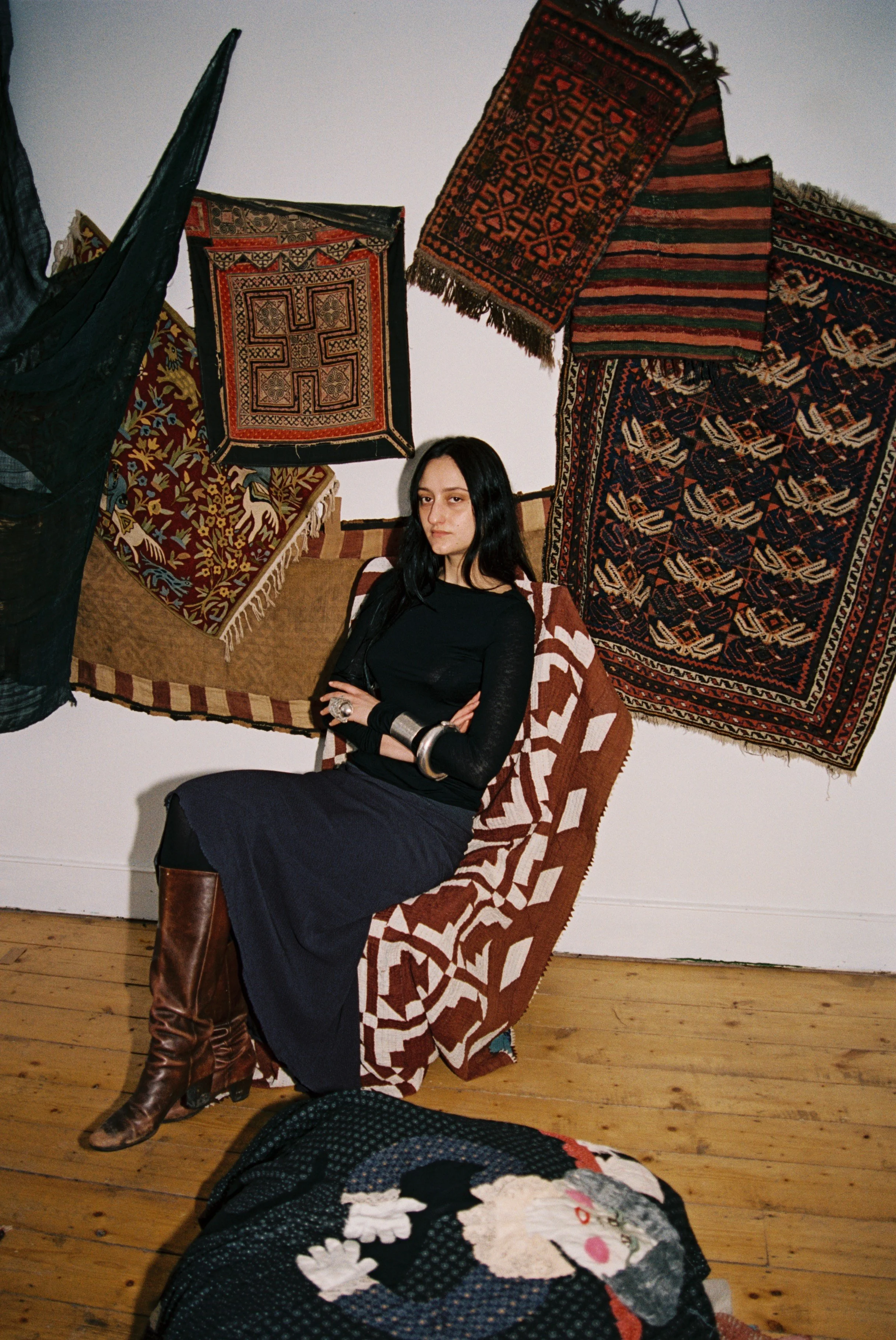JESS MAYBURY
“There's a certain responsibility that comes with selling textiles, especially as I haven't personally created them. While the visual impact of a piece is undeniable, the narrative behind it adds another layer of beauty. Context and history are paramount, as aesthetics and trends are fleeting.”
When I source textiles, I don't have a specific piece in mind. Instead, I am instinctively drawn to items that spark excitement and intrigue. From there, I begin a process of deep research, exploring the piece's origins, materials, history, techniques, and the stories of the artisans who created it. It’s both inspiring and emotionally moving to learn about the exceptional skills and creativity behind these works, especially when they reflect techniques passed down over generations, spanning centuries. Yet, I can experience the same sense of joy when I come across a more recent creation, like a surreal, and slightly tatty object from just 20 years ago. The power of human imagination and creativity, whether in an intricately embroidered Uzbek suzani or a school project made from glue and felt, it is a constant source of joy and inspiration for me.
Textiles have always served a utilitarian purpose, whether for warmth, protection from the elements, or to shape the body through clothing. Thankfully, this practicality hasn't meant that they lacked beauty. Through the art of printing, embroidery, and dyeing, fabrics have been transformed into objects of extraordinary beauty. Carpets, rugs, and kilims, for example, were often not just meant for the floor but were hung on walls to showcase their fine craftsmanship, much like a painting. The colour and tactile nature of fabric can profoundly impact your mood, from the softness of cotton or silk clothing to the feel of wool beneath your feet on a rug.
I’ve always been drawn to the idea that a quilt, for instance, serves as both a source of warmth and a comfort during tough times. It can fill a room with color and personality, breathe new life into an old, worn sofa, or cover up an unattractive duvet cover given to you by a relative when you left home. In contrast, furniture often carries a certain formality or coldness, with an air of snobbery surrounding taste and design in the home. But textiles, predominantly crafted by women around the world, offer a different kind of artistry, one that is often undervalued or even patronised as an art form due to the perceived softness and femininity of the material. However, textiles like quilts, tapestries, and rugs tell vibrant stories, showcasing a level of sophistication and expressionism that should be celebrated within the home.
Jess studied at Camberwell College of the Arts in Illustration 2015.
She took part in Showroom with Open by Appointment Milo Cordell showcasing a selection of her textiles alongside his post modern furniture in 2020.
Jess is one of House and Garden’s 25 Rising stars, 2025 and has articles written about her in Vogue, Financial Times and The New York Times.

